 |
| Japan |
| Hiroshima |
| Itsukushima Shrine |
|
The present shrine dates from the mid-16th
century, and follows the earlier 12th century design. That design
was established in 1168, when funds were provided by the warlord
Taira no Kiyomori. The Itsukushima Shrine at high tide, when it
appears to float on the water The shrine was designed and built
on pier-like structures over the bay so that it would appear to
be floating on the water, separate from the sacred island, which
could be approached by the devout. Near the main shrine is a noh
stage which dates from 1590. Noh theater performances have long
been used to pay homage to the gods, and ritually act out key
events in the mythic history of Shinto belief. The dramatic gate,
or torii, of Itsukushima Shrine is one of Japan's most popular
tourist attractions, and the most recognizable and celebrated
feature of the Itsukushima shrine, and the view of the gate in
front of the island's Mount Misen is classified as one of the
Three Views of Japan. Although a gate has been in place since
1168, the current gate dates back to 1875. The gate, built of
decay-resistant camphor wood, is about 16 metres high; the
placement of an additional leg before and behind each main pillar
identifies the torii as reflecting the style of Ryobu Shinto, a
medieval school of esoteric Japanese Buddhism associated with the
Shingon Sect.The torii only appears to be floating at high tide;
when the tide is low, it is approachable by foot from the island.
It is common practice for visitors to place coins in the cracks
of the legs of the gate and make a wish. Gathering shellfish near
the gate is also popular at low tide. Many locals add the
shellfish they gather to their miso soup. At night, powerful
lights on the shore illuminate the torii.
Click on the picture to get a larger
version
| View
from the ferry to the island |
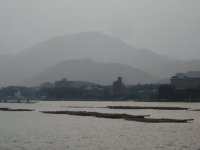 |
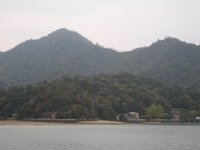 |
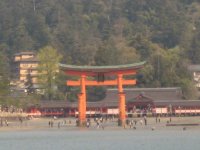 |
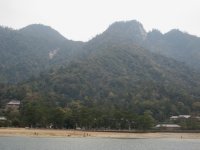 |
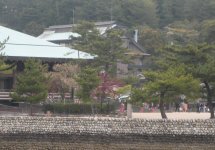 |
| It's
really tall and beautiful |
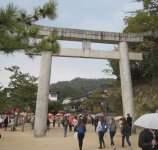 |
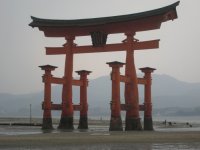 |
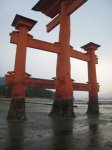 |
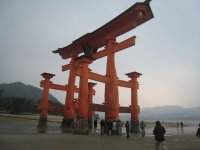 |
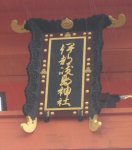 |
 |
 |
| Small
odds and ends on the island |
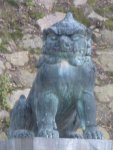 |
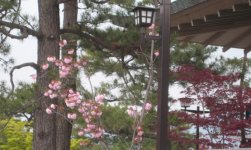 |
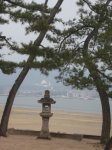 |
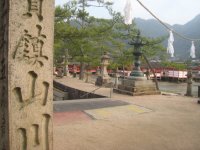 |
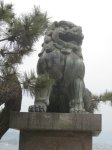 |
| Temptations
on the way back to the boat |
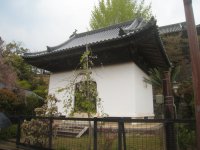 |
 |
 |
 |
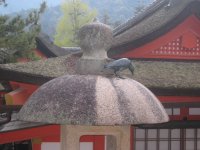 |
| Caught much here |
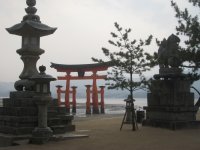 |
< Back to the index

